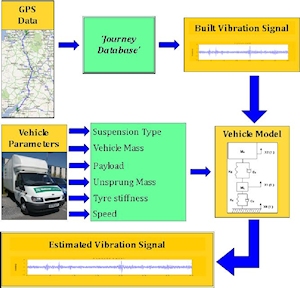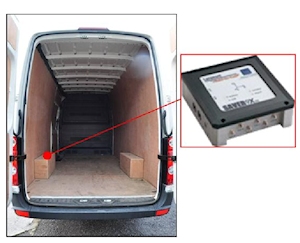The United Kingdom's University of Bath, in collaboration with Pira International is undertaking research to create an improved simulation method that embodies more realistic vehicle vibration for the purpose of optimising packaging.
Many parameters, pertaining to both the vehicle and the distribution route, affect a vehicle’s vibration. This means that no two products in distribution will be subjected to the same vibration.
The key challenges are therefore to consider in detail the journey and the vehicle response, and to do so as part of a commercially and practically feasible methodology.
The solution proposed by the team is to create a ‘Journey database’ with an integrated computational vehicle model. The ‘Journey Database’:
Constructing a Representative Journey

The ‘Journey database’ contains segments of representative road profiles derived from measured vehicle vibration data, which has been categorised based on the classification and condition of the road on which it was recorded on.
This data is then used to construct a representative journey. By then running this journey through a computational model of the intended distribution vehicle, an estimated expected vehicle vibration signal can be calculated.
The benefit of this technique is that from a relatively small set of vibration data a large number of journey estimates can be constructed. A user can then construct a more representative vibration test.
Future work on this project will see the integration of an improved simulation technique which compliments the benefits of the journey database technique and ensures that it is commercially and practically feasible.
Data is the Key to a Successful Database

Populating the ‘Journey Database’ requires the simultaneous collection of the vibration and GPS data. It is also necessary to collect the data in segments to allow for easy identification and classification.
Therefore the Saver 9x30 was used. This allowed for usable segments of vibration data to be collected along with the corresponding GPS data. A Saver 9x30 unit was attached to the floor of a home delivery vehicle and data was collected using 1 minute continuous sampling. The data segments were then post-processed using Matlab © and stored within the ‘Journey Database’.
Concluding Remarks Preliminary work with the ‘Journey database’ has produced positive results. Validation of the database will follow in future work. The University of Bath would like to thank Lansmont for their continued support.